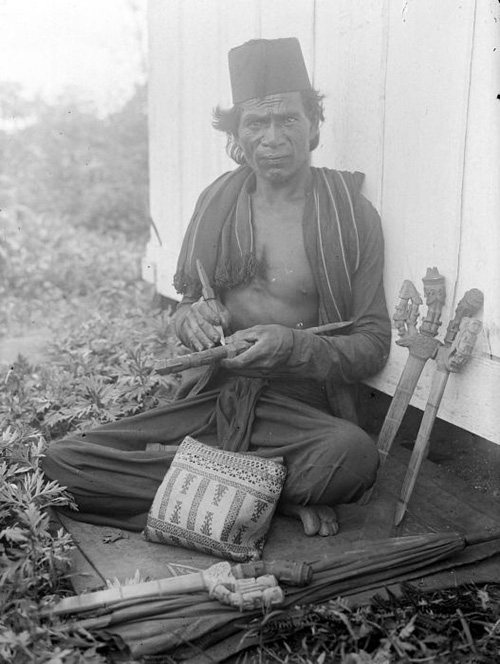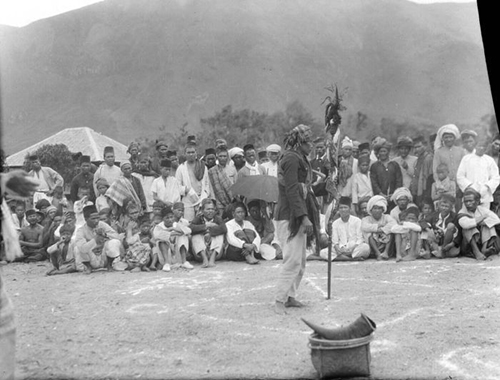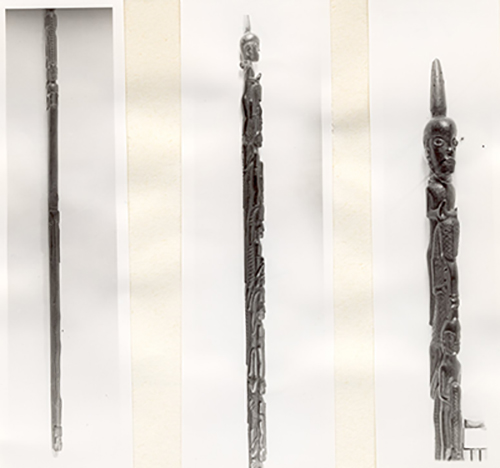Magic wand from Sumatra
The traditional art on the island of Sumatra (Indonesia) is made by various tribes in the highlands, whom together are named Batak. The tribes created their own writing system, based on magical rituals and spells. For instance, Bataks magical books are written on tree barks and are often decorated with drawings of ghosts and so on. Art from the Bataks generally comsists of simple and compact shapes: ‘strength’ as an expression is preferred over the ‘elegancy’ of art. The Bataks specialize in designing various utensils such as different types of masks, statues and this magic wand. Wands are generally about 1,5 to 2,5 meters long. The top is decorated with animal and human figures, stacked on top of each other.
The University Museum possesses a special ethnographical collection by the late professor of history and religious studies Theodoor Pieter van Baaren (1912 – 1989). The collection holds this richly decorated wand with figures of both humans and animals made from glossy black wood. Unfortunately, the headdress is missing. Also, the bottom point of the wand is missing. A standing human figure marks the top, beneath there is a snake, a horned four-footed animal (probably a goat) and lastly a pig or a dog. The wand is for communal use and it is used in various rituals practiced by a datu (magical priest). Whenever part of the community left to form a tribe of their own, there was often a new magical wand made.
The wand is fully carved by hand by the datu with a simple knife as the only tool. The wood originates from a special tree species, the pioe-pioe tanggoelon, poejoe-poejoe-tanggoele or hajoe tanggoelon. The heavy, often distorted tree trunk of these low trees have long pointed thorns, therefore the tree is also called the ‘tada tada’, meaning the unruly. Wood of this tree is often surprisingly hard and is not affected by bugs and insects. In the headdress of the upper figure, the magical pupuk was put. Pupuk is a magical substance, made by the brains, heart and liver of a ceremonially killed infant. This was a horrible event. The little victim was buried alive up to his/her neck. Afterwards, the infant was promised to drink palm wine. However, the datu put melted lead or liquid copper instead of wine through a sahan (magical horn) into the throat of the child.
This magical wand was used for various purposes: for salvation, to bring luck, to keep out bad luck and prevent or recover (mandoedoe) from disasters. The stake could, by using black magic, also be used as the bringer of disasters such as illness and death (manoeroengi). Furthermore, it was used as a counsellor for ruling the land, as a warrior during war, as a rain maker in times of drought or as an oracle tool (tondoeng)




